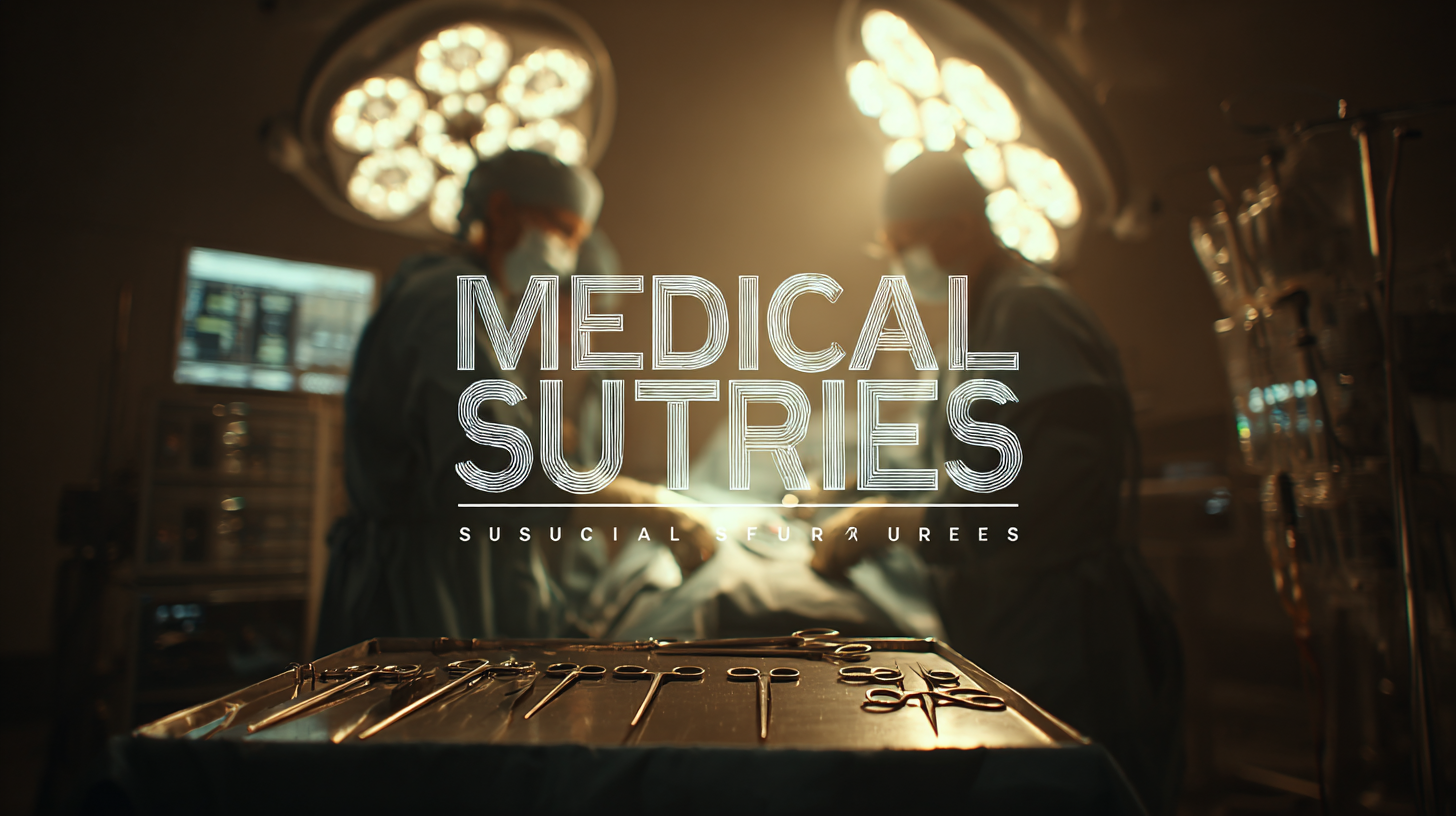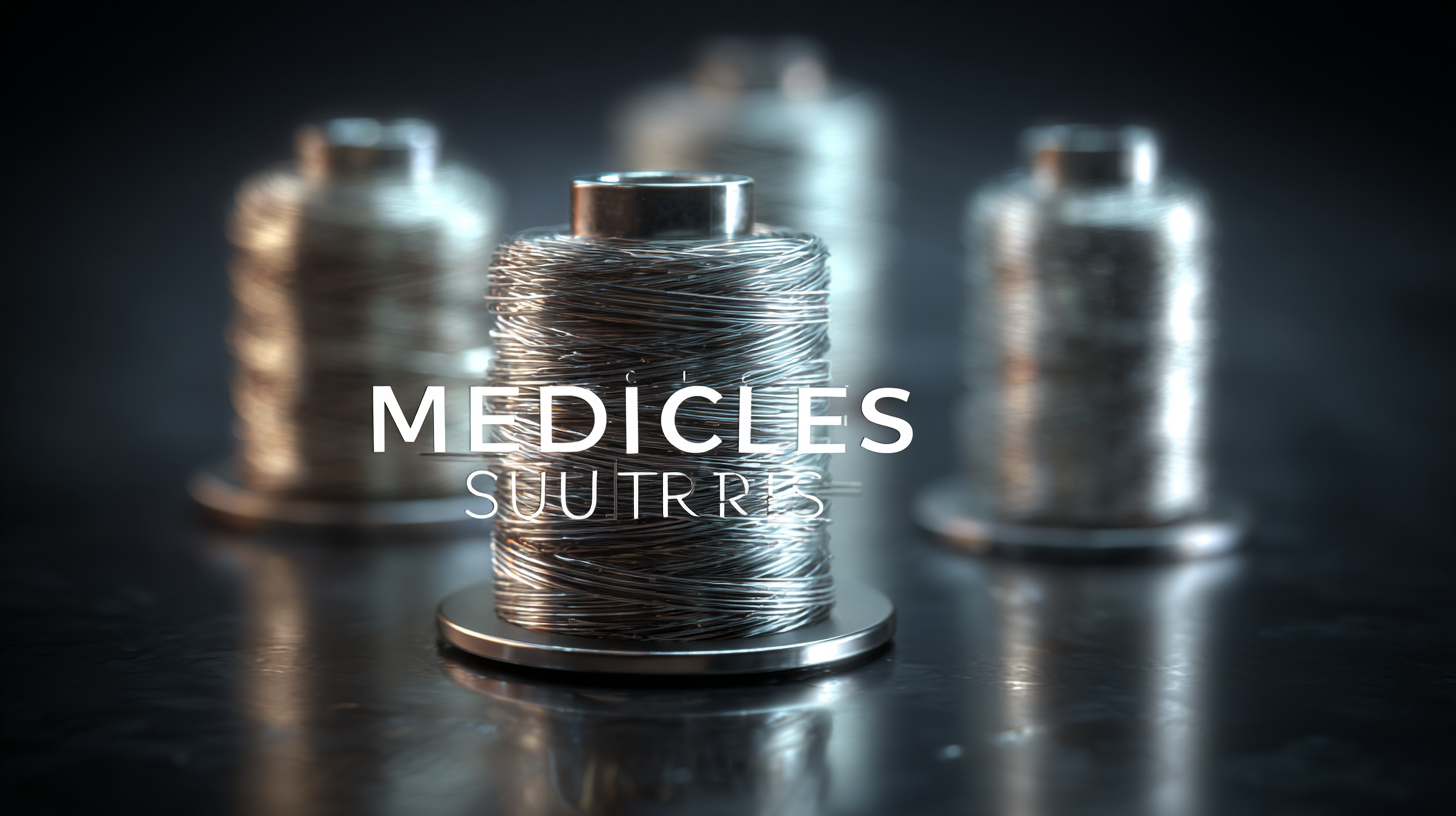- Home
- Products
- Services
- Product concept development
- Engineering
- Design for manufacturability
- Regulatory services
Read more - Material selection and formulation
- Prototyping
- Testing and validation
Read more - Production process development
- Custom tooling
- Manufacturing
- Finishing operations
- Assembly
- Packaging
- Private labeling
- Sterilization
Read more
- Resources
- Careers
- Search
Essential Factors to Consider When Choosing Best Medical Sutures for Surgical Procedures
When selecting the best medical sutures for surgical procedures, it is crucial to consider various factors that can impact patient outcomes and procedural efficiency. According to a report by MarketsandMarkets, the global surgical sutures market is projected to reach USD 5.5 billion by 2025, growing at a CAGR of 5.4%. This growth underscores the significance of choosing the right medical sutures to ensure optimal healing and reduce complications. Alternatives to traditional sutures, such as absorbable materials and non-invasive adhesives, are gaining traction due to their ability to minimize scarring and improve recovery times.

Surgeons must evaluate the specific requirements of each procedure, the patient's condition, and the properties of different suture types to make informed decisions that align with the latest industry advancements and patient care standards.
Key Attributes of High-Quality Medical Sutures for Surgical Operations
When it comes to surgical procedures, selecting the right medical sutures is crucial for ensuring optimal patient outcomes. High-quality medical sutures should possess key attributes such as tensile strength, biocompatibility, and absorption rate. According to a report from the American College of Surgeons, sutures with higher tensile strength are essential for effectively holding tissue together, particularly in high-stress areas. These sutures must endure the forces exerted during the healing process, helping to minimize the risk of dehiscence, which occurs when a surgical wound ruptures.

Another important characteristic of medical sutures is biocompatibility. A study published in Surgical Science Journal indicated that sutures that prompt minimal inflammatory response significantly enhance tissue healing. This is particularly true for absorbable sutures made from materials such as polyglycolic acid, which break down safely within the body. Furthermore, the absorption rate is critical for procedures where timely healing is necessary; choosing sutures that align with the expected healing timeframe can lead to better surgical results and increased patient satisfaction. By carefully evaluating these attributes, healthcare professionals can make informed decisions that promote effective healing and reduce complications in surgical operations.
Emerging Technologies in Suture Materials: Innovations for 2025
The landscape of surgical sutures is evolving rapidly due to advances in material science and technology. Emerging innovations in suture materials for 2025 promise to enhance patient outcomes significantly. A report by MarketsandMarkets predicts that the global surgical sutures market will reach $5.4 billion by 2025, driven by ongoing research into biocompatible materials and the integration of smart technology in suturing systems. These advancements not only improve the mechanical properties of sutures but also offer innovative solutions like bioactive sutures that promote healing by releasing growth factors at the surgical site.
One notable development is the incorporation of antimicrobial properties in suture materials, which addresses the increasing concern over surgical site infections (SSIs). According to the CDC, SSIs affect 1 in 31 hospital patients, highlighting the critical need for safer surgical practices. Sutures infused with antimicrobial agents can reduce the risk of infection, contributing to shorter recovery times and lower healthcare costs. As we look towards 2025, the medical community anticipates these cutting-edge materials will become standard practice, ensuring both efficacy and safety in surgical procedures.
Exploring Biodegradable Sutures: Environmental and Clinical Benefits
Biodegradable sutures have gained significant attention in recent years, particularly due to their environmental and clinical benefits. A report by the Global Biodegradable Sutures Market indicates a compound annual growth rate (CAGR) of 8.5% from 2022 to 2030, highlighting a growing preference for materials that minimize long-term waste while offering effective healing solutions. These sutures are designed to break down naturally in the body over time, thus eliminating the need for removal procedures and reducing surgical complications related to non-resorbable materials.
Clinically, biodegradable sutures not only promote wound healing but also mitigate the risks of infection associated with traditional sutures. A study published in the Journal of Surgical Research found that patients using biodegradable sutures experienced a 30% reduction in postoperative infections compared to those with standard sutures. This enhanced safety profile is particularly crucial in procedures involving delicate tissues or where optimal healing is essential, underscoring the importance of selecting the right materials for surgical interventions. As the medical community continues to prioritize sustainability alongside patient outcomes, the shift towards biodegradable sutures appears both necessary and beneficial.
Comparative Analysis of Suture Types: Finding the Right Alternative
When it comes to selecting the best medical sutures for surgical procedures, understanding the comparative advantages of different suture types is crucial. A thorough analysis of sutures reveals a spectrum encompassing both absorbable and non-absorbable materials, each with unique properties that influence their performance in various surgical contexts. For example, while absorbable sutures offer convenience in internal repairs where removal isn't feasible, non-absorbable sutures are preferred for external applications requiring durability over time.

Recent studies highlight innovative alternatives such as cyanoacrylate adhesives, which have demonstrated efficacy in flap approximations and in minimizing bleeding during procedures. Comparatively, techniques like fibrin glue and modern suture devices such as knotless anchors might also enhance surgical outcomes by streamlining closure processes and reducing patient recovery times. This invaluable insight into the range of options available helps surgeons make informed decisions tailored to the specific needs of each surgical case, optimizing patient care and recovery.
Future Trends in Surgical Suturing: Predicting the Next Big Developments
In the ever-evolving field of surgical suturing, staying ahead of trends is crucial for medical professionals. The global market for surgical sutures is experiencing significant growth, with absorbable sutures becoming the predominant choice among surgeons. As technology advances, we can expect remarkable innovations in suturing techniques and instruments, such as the rise of intelligent suturing devices. These advancements not only enhance the efficiency of surgical procedures but also aim to reduce complications and improve patient outcomes.
Additionally, the emergence of robotic-assisted suturing systems is poised to revolutionize the surgical landscape. With predictions suggesting that robots may surpass skilled human surgeons in just a few years, healthcare providers must adapt to these technological changes. The integration of smart anastomosis devices, capable of streamlining complex surgeries, will likely become a standard in operating rooms, further amplifying the importance of selecting the right sutures. As we look to the future, medical professionals will need to consider these trends carefully to ensure they’re utilizing the best available tools for their surgical practices.






